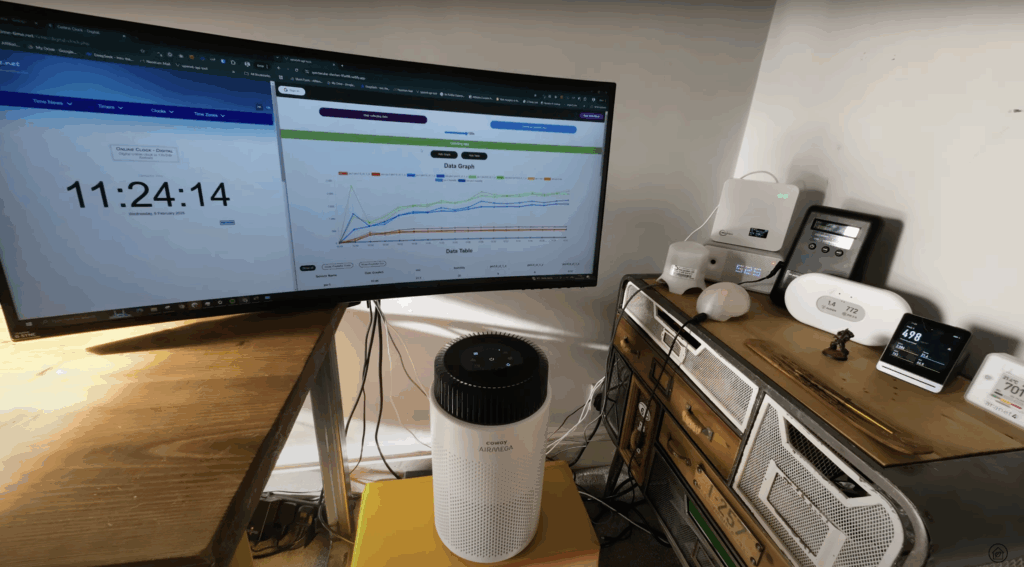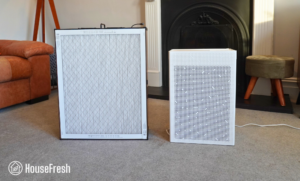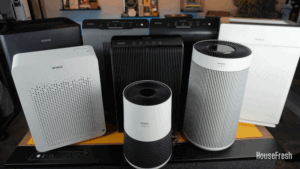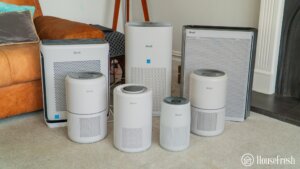Many air purifiers on the market boast about a different kind of air cleaning technology, that supercharges (or outperforms) the ability of the usual filters to remove harmful pollutants from your air. When reading in between the lines, you will find mentions of ‘negative ions’ or ‘electrostatic precipitation.’ You guessed it, I’m talking about air purifiers with ionizer functions.
Ionizers were more popular in the early 2000s, right up to the point when they were found to produce dangerous ozone levels. In 2010, rules were put in place that meant all air purifiers had to be tested and meet CARB-certified standards of less than 0.050 parts per million (ppm) or 50 parts per billion (ppb).
Even when air purifiers meet these standards, units with ionizers can still produce levels of ozone as a byproduct that can be harmful to those sensitive to this gas. For context, the modern air purifier that produces the highest amount of ozone (as per Energy Star) is the AirDog X5, which produces 28 ppb.
So, while an ionizer can help eliminate contaminants from your room, is it really worth the risk?
At HouseFresh, we believe that anyone with respiratory issues should avoid ionizers. Our data shows that the right air purifier (with high quality particle and activated carbon filters) will help keep your air clean and safe without generating any harmful byproducts.
In this guide, I will take you through our shortlist of the best ozone-free air purifiers, based on our first-hand data from buying and testing nearly 100 units since 2020.
The 4 best performing ozone-free air purifiers
If you don’t want to read the full list, you can check out the table below where I added quick stats so you can compare my top picks at a glance:
| LARGE SIZE | MEDIUM SIZE | SMART OPTION | BUDGET OPTION | VOCs OPTION | |
|---|---|---|---|---|---|
| Smart Air Blast Mini | Levoit Vital 200S | EverestAir | AirFanta 3Pro | IQAir HealthPro Plus | |
 | 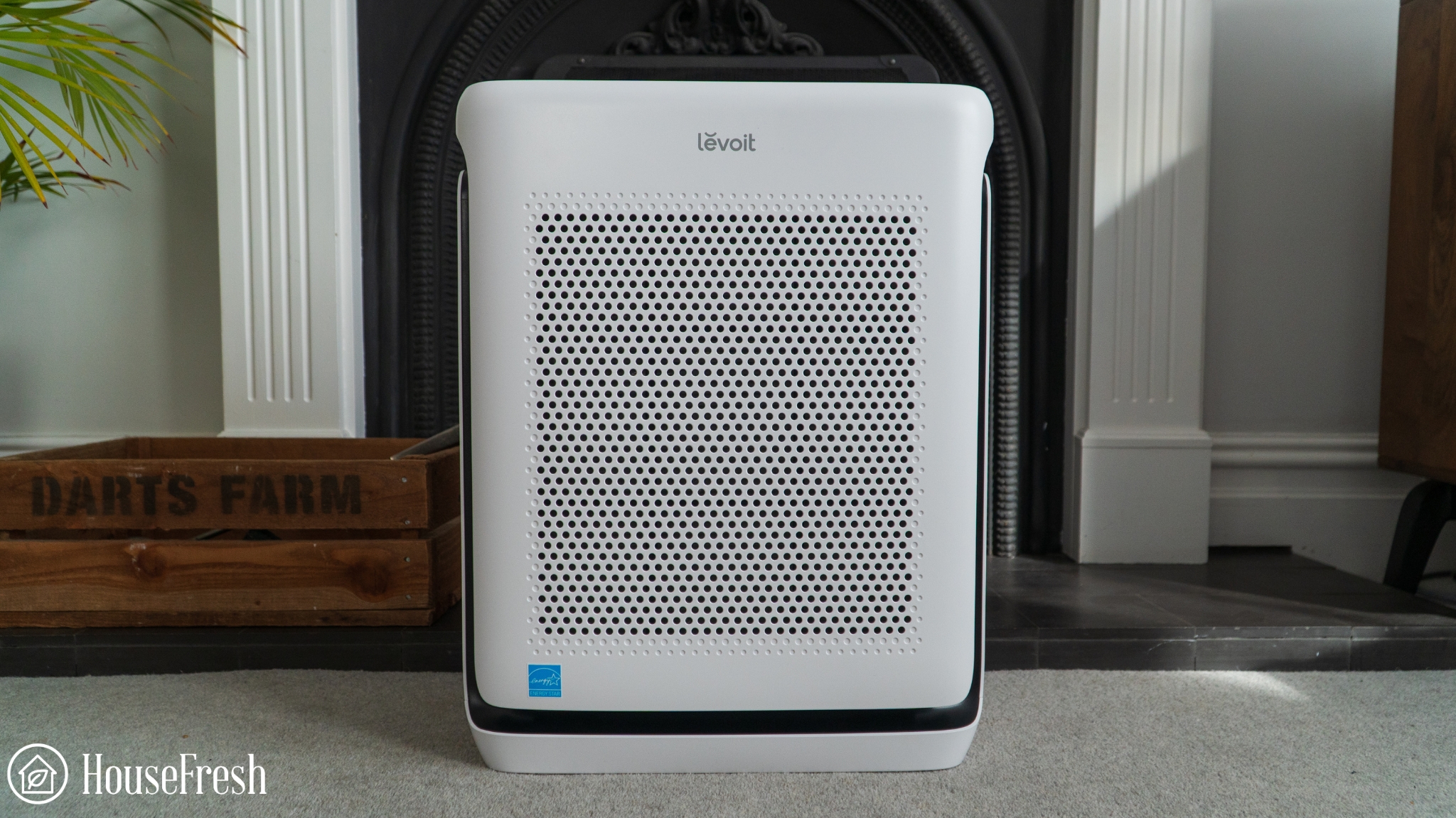 | 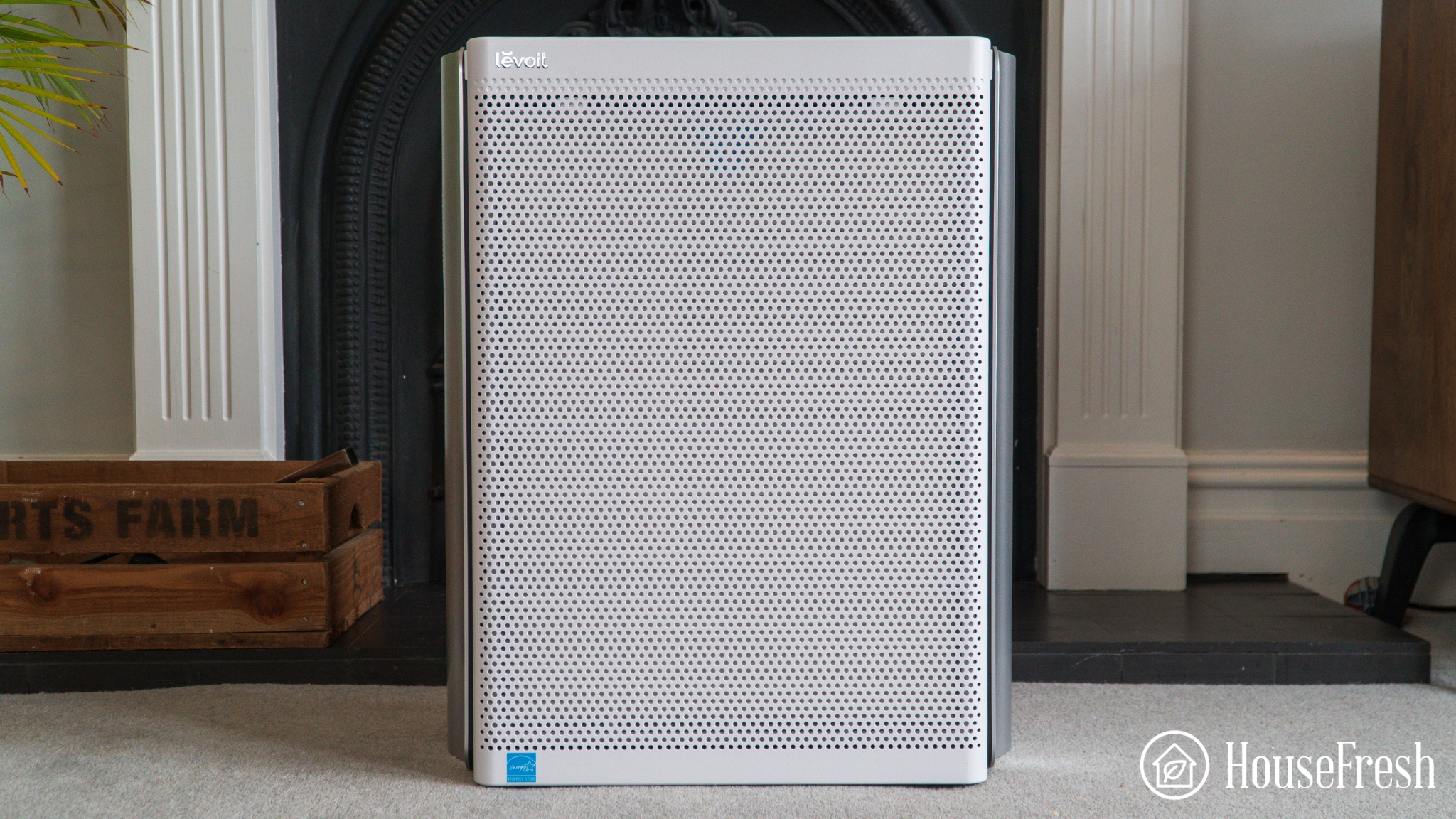 |  | 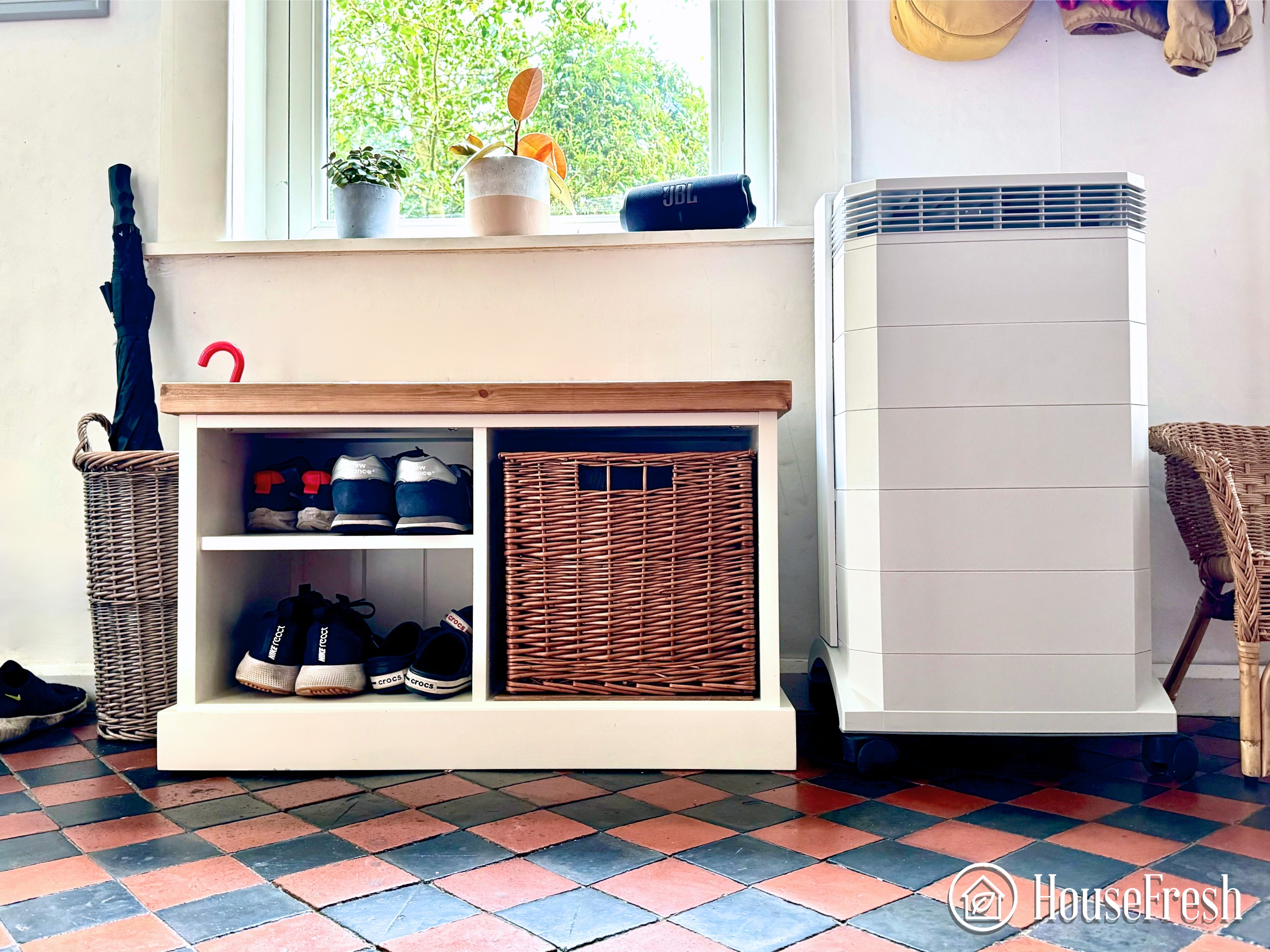 | |
| Time to PM1 zero | 15 minutes | 23 minutes | 16 minutes | 17 minutes | 28 minutes |
| CADR | 450 CFM | 263 CFM | 360 CFM | 430 CFM | 250 CFM |
| Filter tech | H13 HEPA w/ optional carbon filter | Bonded particle + carbon filter | Bonded particle + carbon filter | H11 HEPA + carbon | HyperHEPA + V50-CELL carbon |
| Max room size (5 ACH) | 703 sq. ft. | 375 sq. ft. | 558 sq. ft. | 671 sq. ft. | 375 sq. ft. |
| Long-term running costs | $311.89 / year | $96.82 / year | $173.57 / year | $125.23 / year | $421.47 / year |
| List price | $599.00 | $189.99 | $499.99 | $149.99 | $1,199.99 |
Read on to find out more about each of these excellent mechanical-based air purifiers that will clean your air without using any form of ionizer technology and, more importantly, without generating ozone.
1. Best for large spaces: Smart Air Blast Mini
A robust air purifier engineered for performance – no apps, no sensors, no ozone… no nonsense.

Smart Air may not be as well known as long-standing manufacturers such as IQAir or Alen, but the units we’ve tested proved that they really know what they’re doing. The engineers at Smart Air are focused on building high-performing air purifiers without the dangers of producing ozone.
The Blast Mini is a big air purifier with a robust metal shell. Underneath its tank-like exterior is a large powerful fan and a huge H13 HEPA filter. Its high CADR of 435 CFM can quickly filter the air in large spaces up to 703 sq. ft. (room size calculated based on its ability to provide five air changes per hour).
What we really like
What we think could be better
The HEPA filters in the Blast Mini is MASSIVE and can last up to 4 years (in comparison, most air purifier filters need to be replaced within 6-12 months). Unfortunately, the Blast Mini doesn’t come with an activated carbon filter as standard, but I highly recommend spending that bit extra and getting one.

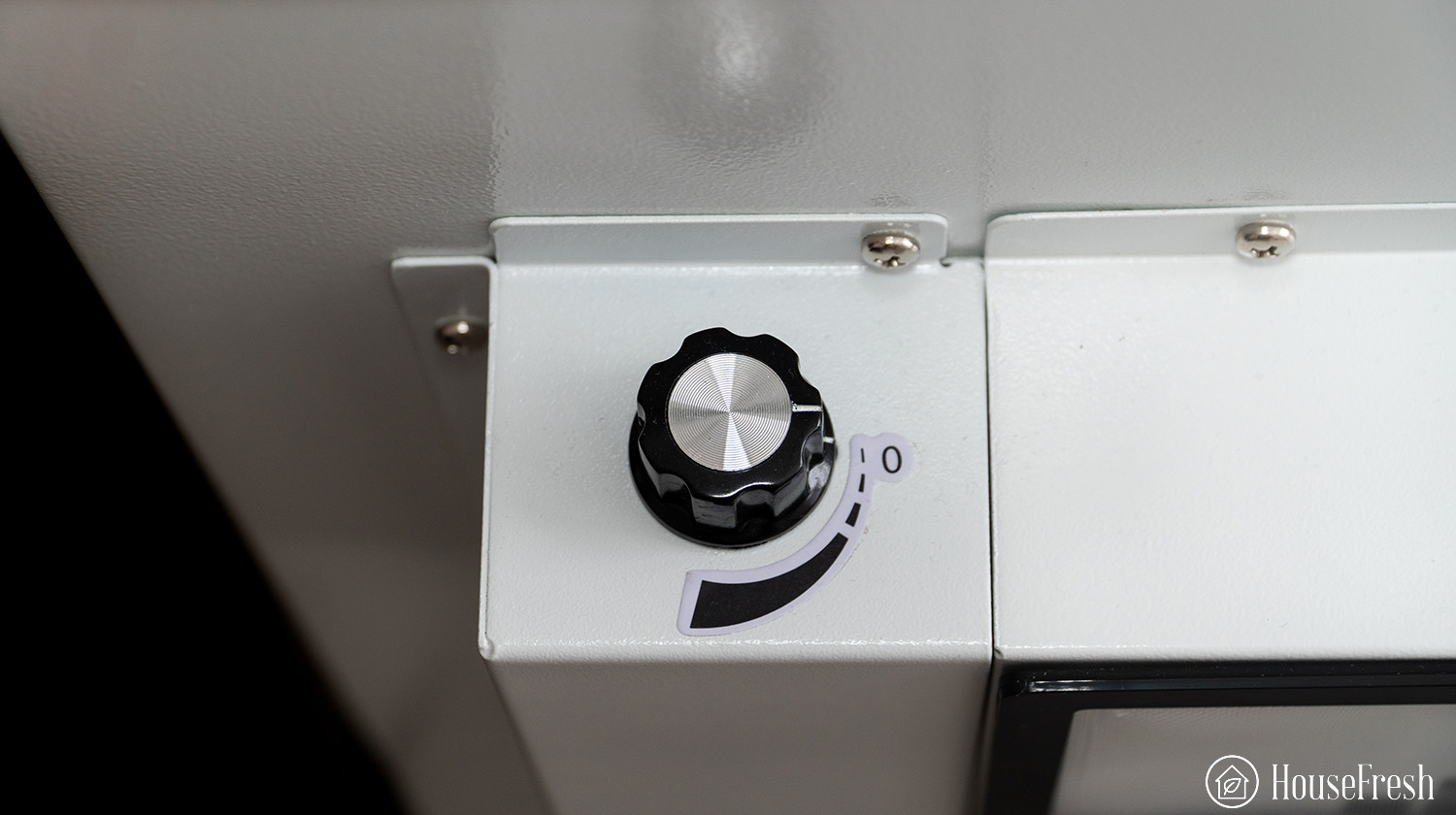
| HouseFresh rating: | ★★★★★ |
| Time to clean our 728 cubic feet test room (with the device running at top speed): | 15 minutes |
| Air purifier technology: | H13 HEPA filter (and optional activated carbon filter) |
| Recommended room size (4.8 air changes per hour): | 703 sq. ft. |
| Clean air delivery rate (estimated CADR): | 435 CFM |
| Dimensions (in inches / in cm): | 22.6L x 13W x 24.8H inches (57.5L × 33W × 63H cm) |
| Weight (in pounds / in kg): | 59 lbs (26.8 kg) |
| Filter life: | 13 months |
| Noise level in decibels (measured from 3 ft. away with a sound level meter): | Speed 1: 44.9 dB Speed 2: 51.2 dB Speed 3: 56.3 dB |
| Electricity consumption in watts (recorded with an electricity usage monitor): | Standby mode: 0 watts Speed 1: 51.9 watts Speed 2: 87.4 watts Speed 3: 122.7 watts |
| Estimated running cost (electricity consumption + official filter replacement): | $285.29 per year |
| Cost per CADR cfm (based on dust CFM as reported by AHAM): | $1.38 |
| Manufacturer’s warranty: | 1 year |
| Country of manufacture: | China |
2. Best for medium-sized spaces: Levoit Vital 200S
Everything you expect from a premium-priced air purifier rolled into a budget-friendly, ozone-free unit.

We already got our hands on the Levoit Vital 100, so we knew we had to test the next model up. The Levoit Vital 200S is a more advanced air purifier for medium-sized rooms that performs better than its little brother and comes with a high CADR, smart features and low running costs — all for under $200.
When you buy an air purifier in this price range, you don’t necessarily expect it to have all the bells and whistles that come with more expensive units. Well, the Vital 200S comes packed with all of them: sleep mode, auto mode, timer, display lock and an air quality indicator. Plus, you can monitor and control everything from Levoit’s VeSync smartphone app.
What we really like
What we think could be better
We also didn’t expect an air purifier in this price range would come with all those features AND would have outstanding air cleaning performance. We were surprised to see the Vital 200S completing our particle removal test in just 23 minutes — extremely impressive and on par with what we saw with more expensive units like the Winix 5500-2 and the Smart Air SA600.
Levoit has pushed its engineers to create a unit that both performs impeccably, is easy to control and looks modern and stylish. All with zero ozone emitted into your air. Bravo, Levoit.
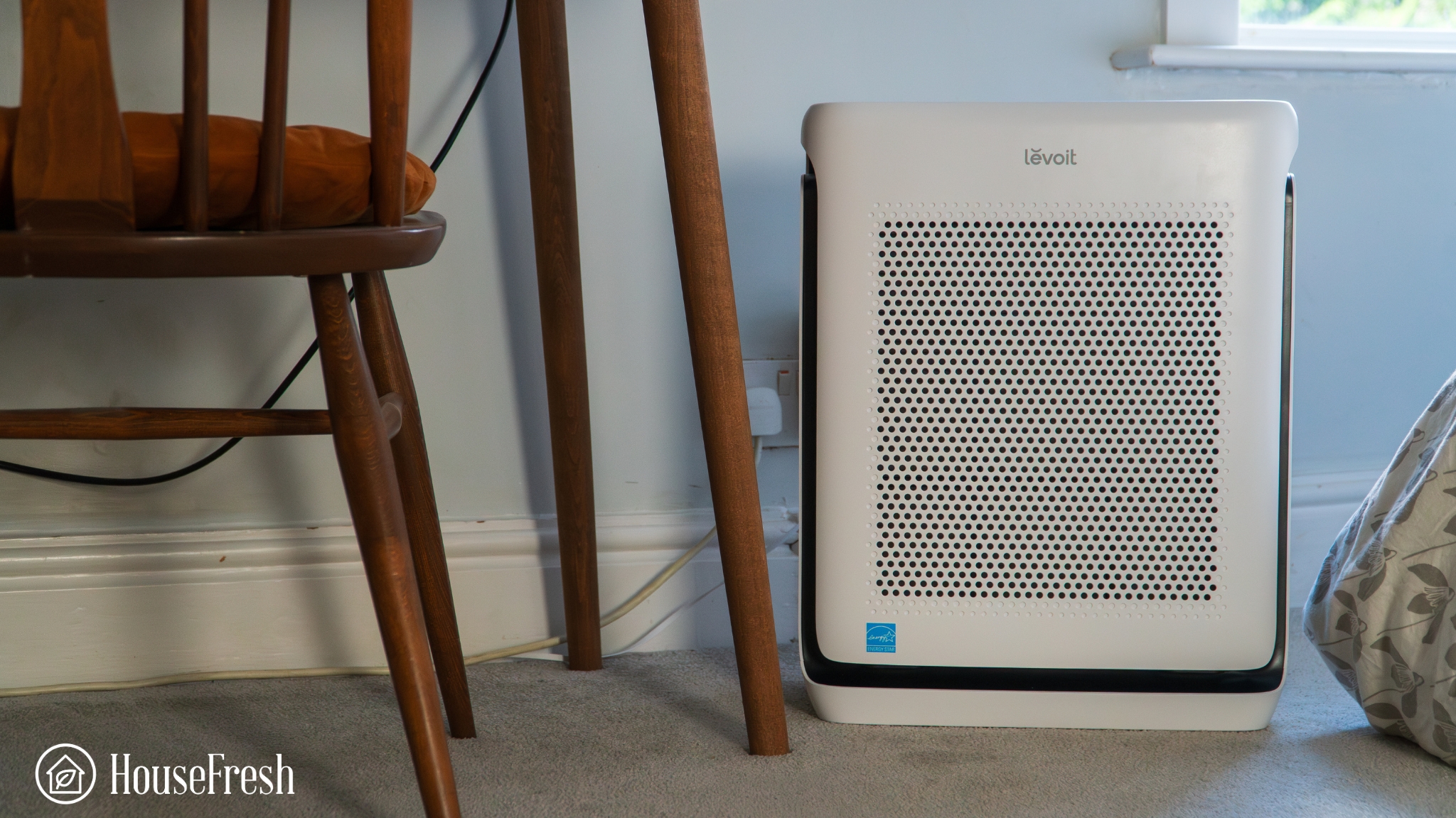
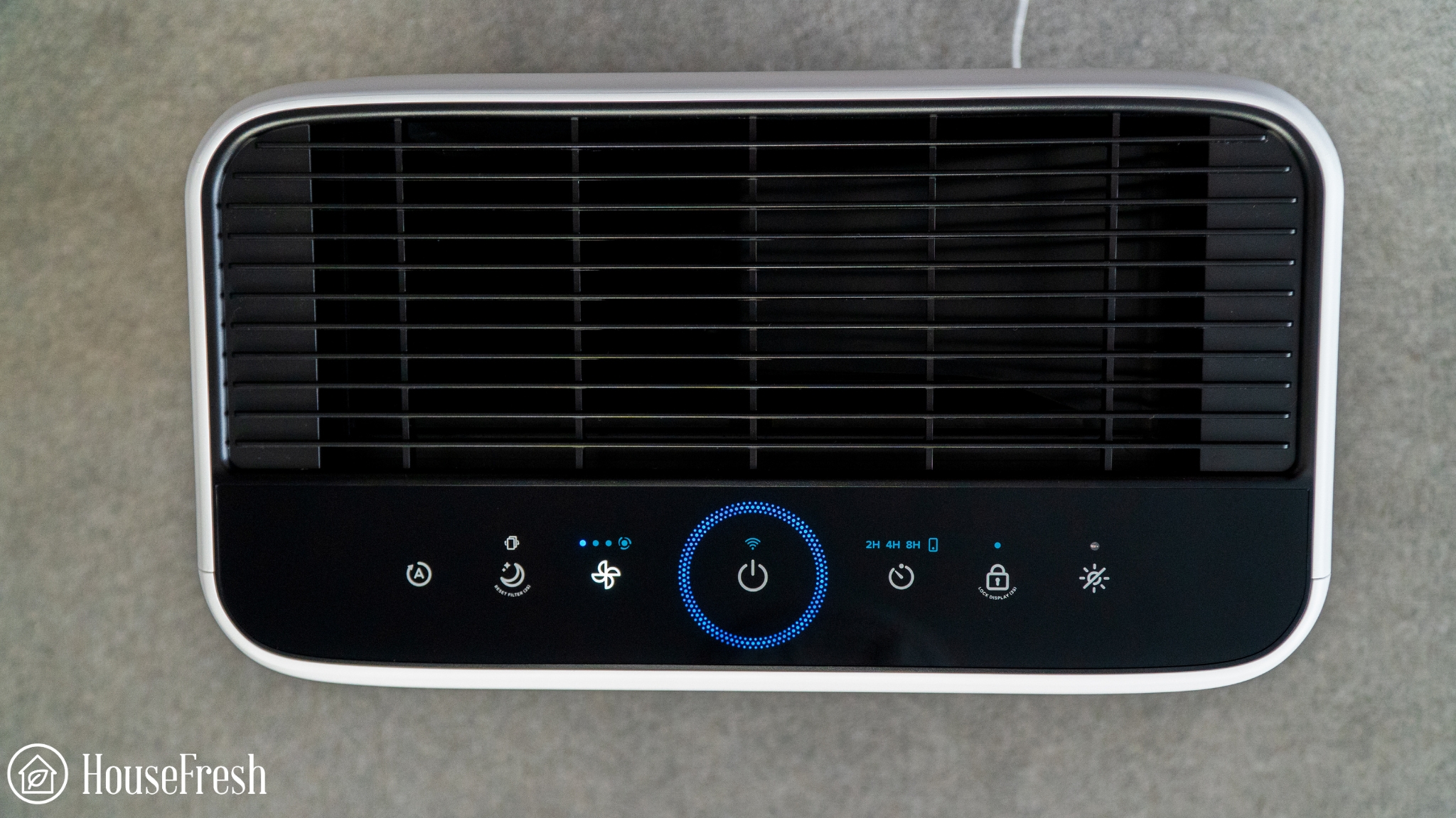
| Clean air delivery rate (CADR): | – Top speed PM1 CADR: 260 cfm – Sub-45 dBA PM1 CADR: 128 cfm – AHAM PM2.5: 263 cfm (dust) |
| Filter technology: | Bonded particle and activated carbon filter with removable pre-filter |
| Recommended room size: | 390 sq. ft. (5 air changes per hour) |
| Dimensions: | 15.6D x 8.5W x 19.8H inches (39.3D x 21.5W x 50.2H cm) |
| Weight: | 13.2 lbs (5.9 kg) |
| Noise level in decibels from 3 ft. away: | Speed 1: 38.3 dB Speed 2: 41.9 dB Speed 3: 53.8 dB Speed 4: 57.7 dB |
| Electricity consumption in watts: | Standby mode: 0.97 watts Speed 1: 5.71 watts Speed 2: 8.01 watts Speed 3: 31.96 watts Speed 4: 44.55 watts |
| Filter lifespan: | 12 months |
| Manufacturer’s warranty: | 2 years |
| Country of origin: | United States |
| Country of manufacture: | China |
3. Best smart option: Levoit EverestAir
Everything you need from an ozone-free air purifier, including the looks and all the smart functions you can think of.
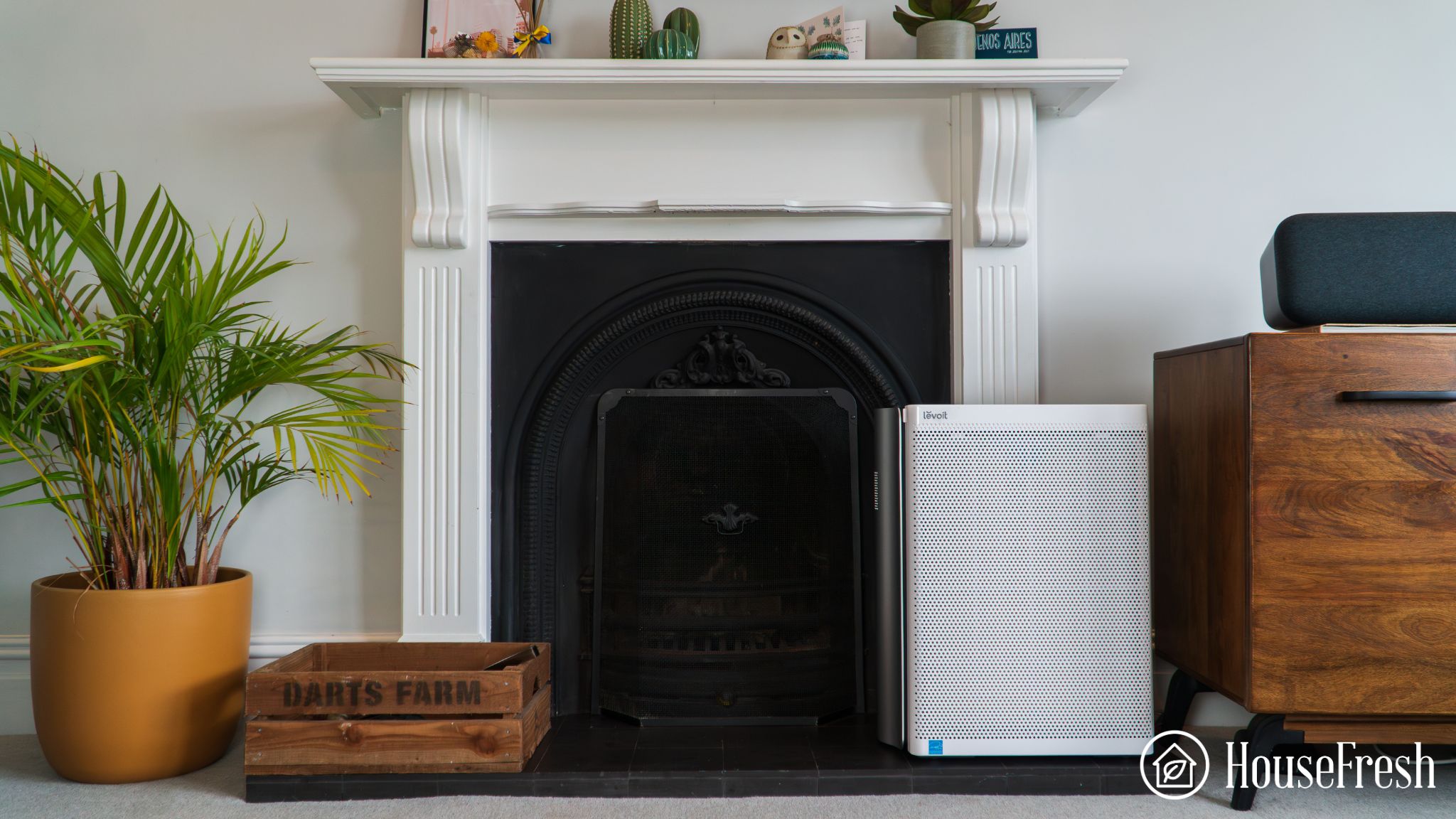
Recommending yet another Levoit air purifier might seem a bit controversial with the recent claims from Dyson that led to Levoit removing the use of the word ‘HEPA’ from all their marketing materials. The reason why the EverestAir (and other Levoit units) made this list is their air cleaning performance. Even without a H13 True HEPA filter, the EverestAir was still able to complete our particle removal test in 16 minutes, making it one of the fastest air cleaners we tested, second only to the Blast Mini (#1 recommendation on this list).
What we really like
What we think could be better
The EverestAir looks very different from other Levoit air purifiers both in terms of what’s going on in the outside (air quality display, adjustable air vents, front panel, wheels) and on the inside (large and thick 3-stage air filter). Levoit has also packed the EverestAir with all the smart features you’ll need in the modern home, including auto mode, sleep mode, turbo mode, timer, air quality indicator and app connectivity.
The EverestAir incorporates a powerful motor and large fan to achieve its high CADR of 360 CFM, without producing a hint of harmful ozone.
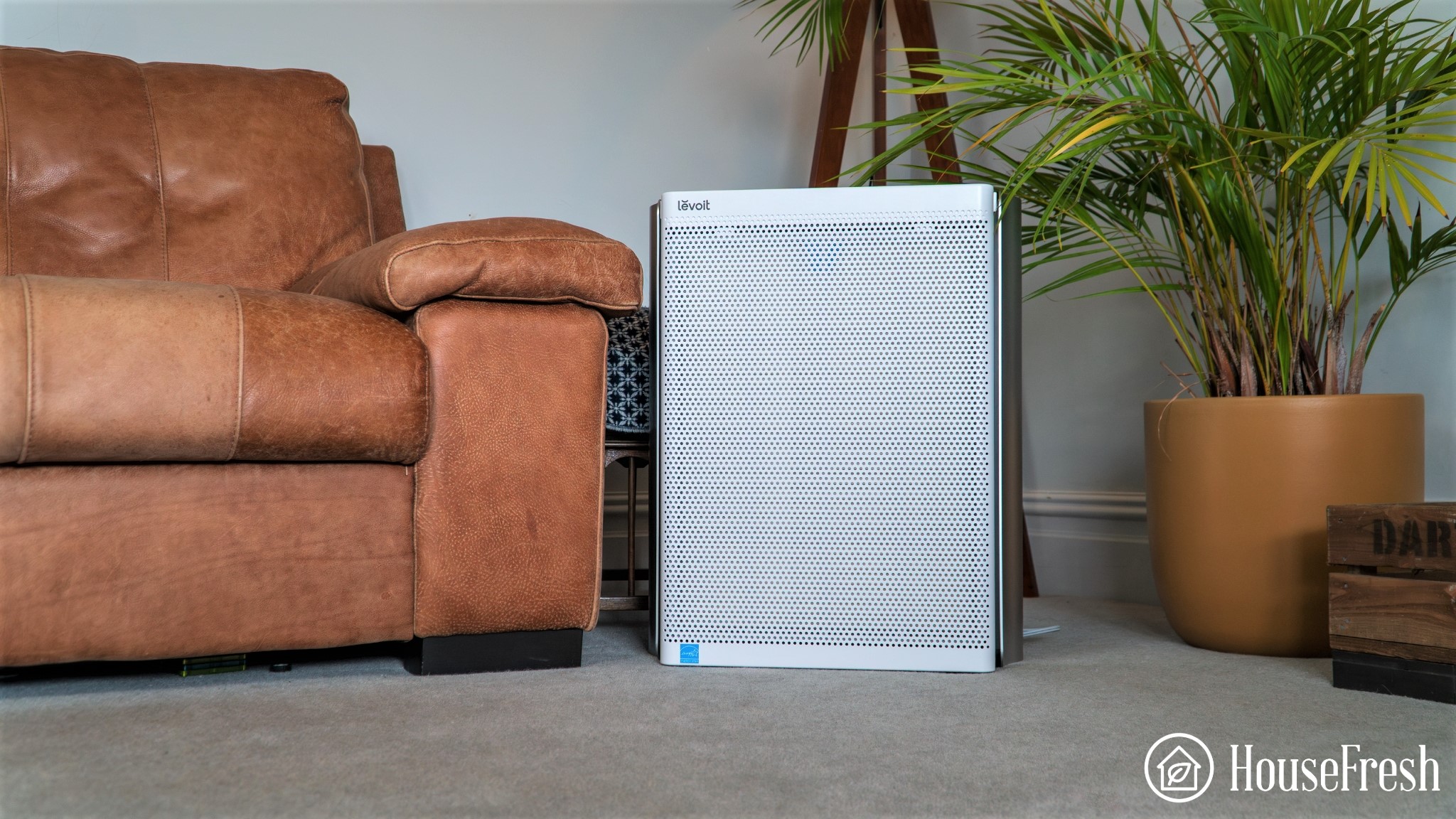
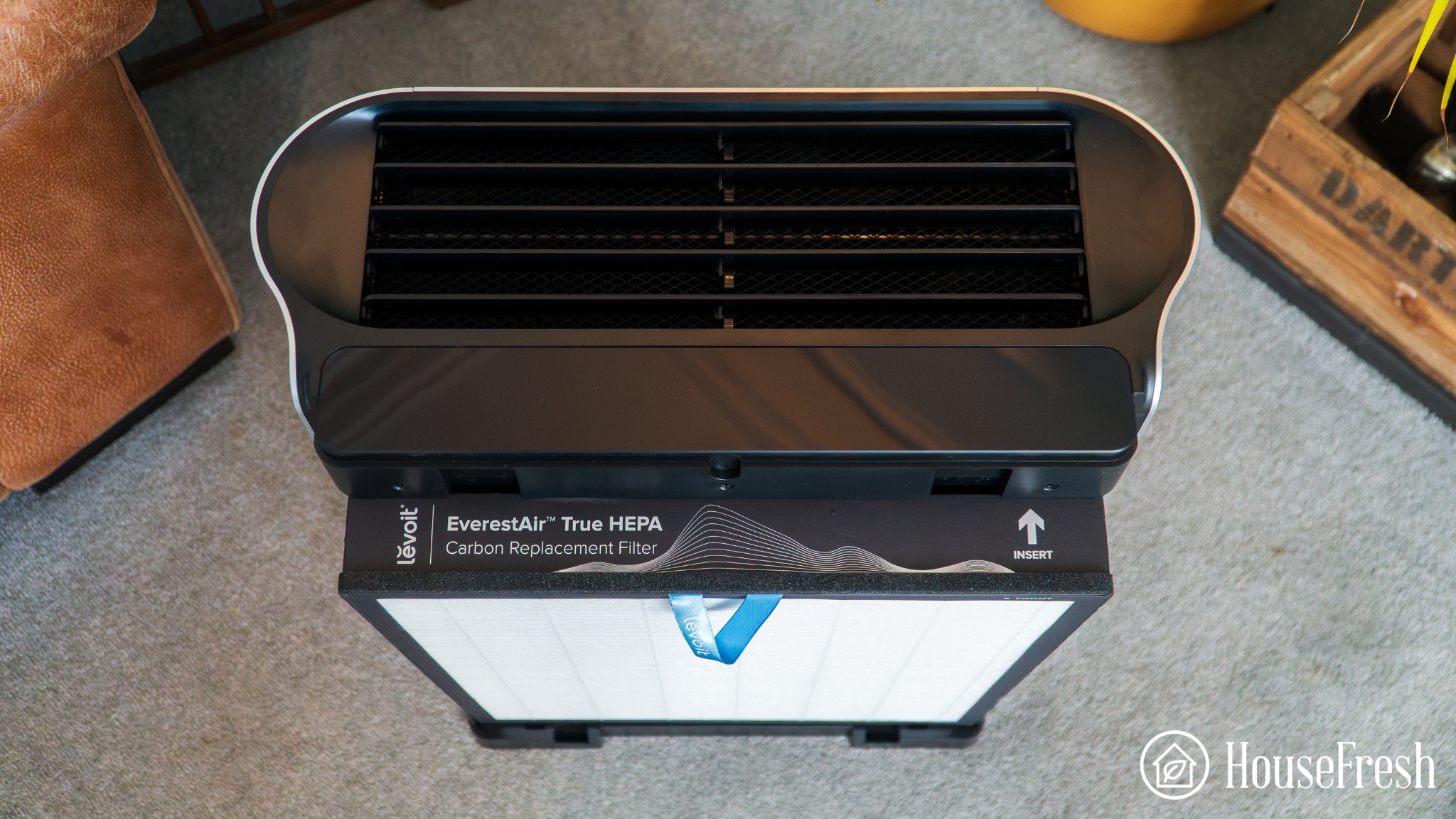
| HouseFresh rating: | ★★★★★ |
| Time to clean our 728 cubic feet test room (with the device running at top speed): | 16 minutes |
| Air purifier technology: | 3-Stage Filtration (Pre-filter for large particles, main filter for airborne particles, high-efficiency activated carbon filter for odors and gasses) |
| Recommended room size (4.8 air changes per hour): | 563 sq. ft. |
| Clean air delivery rate (CADR): | Dust: 365 CFM Smoke: 363 CFM Pollen: 428 CFM |
| Dimensions (in inches / in cm): | 18.9L x 8.5W x 23.2H inches (48L x 21.6W x 58.9H cm) |
| Weight (in pounds / in kg): | 20.7 lbs (9.39 kg) |
| Filter life: | 12-15 months |
| Noise level in decibels (measured from 3 ft. away with a sound level meter): | Speed 1: 39.1 dB Speed 2: 43.2 dB Speed 3: 48.6 dB Turbo: 57.8 dB |
| Electricity consumption in watts (recorded with an electricity usage monitor): | Standby mode: 1.26 watts Speed 1: 9.85 watts Speed 2: 15.59 watts Speed 3: 26.6 watts Turbo: 69.8 watts |
| Estimated running cost (electricity consumption + official filter replacement): | $206.36 per year |
| Cost per CADR cfm (based on dust CFM as reported by AHAM): | $1.37 |
| Manufacturer’s warranty: | 2 years |
| Country of manufacture: | China |
If you like the sound of a Levoit air purifier but your budget doesn’t quite stretch to the EverestAir, then check out the Levoit Core 600S. It’s powerful, packed with smart features, and only costs around $300.

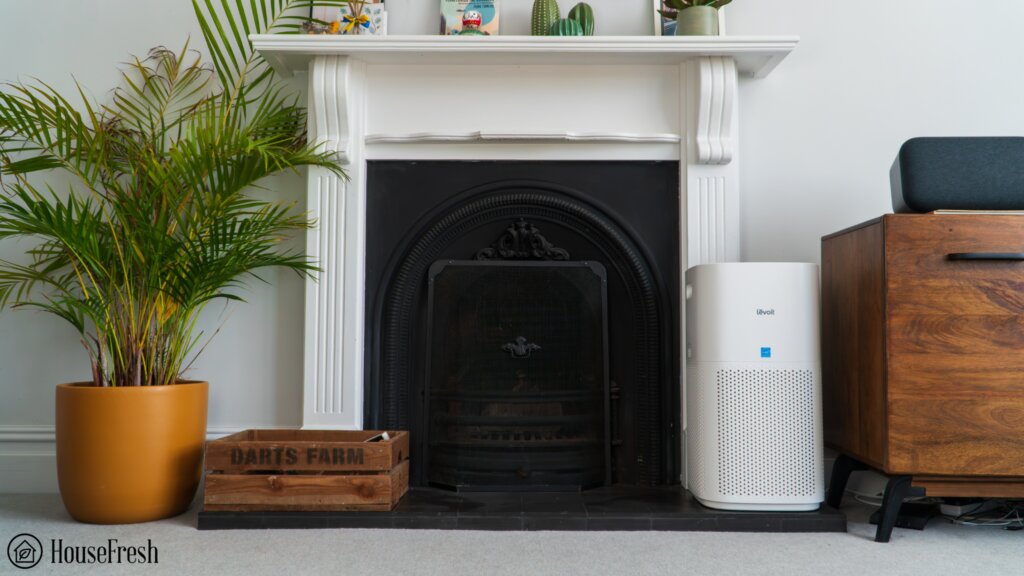
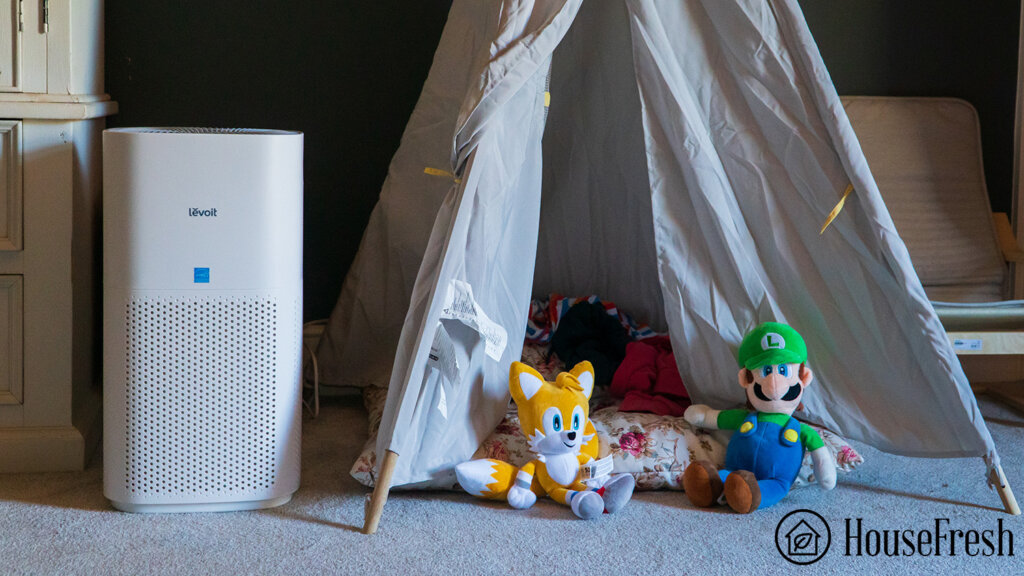
4. Best budget option: AirFanta 3Pro
This PC fan-powered air purifier proves that you can have excellent air cleaning power at a budget price.

Use the discount code HOUSEFRESH for 5% off when buying directly from AirFanta.
The AirFanta 3Pro is one of my favorite budget air purifiers we have tested. The upfront and long-term running costs of air purifiers can start to stack up when you start adding up electricity consumption and filter replacement costs. Luckily, there are a few units out there that won’t cost you an arm and a leg to buy (and to run!) but will still offer solid air cleaning performance. That is the case with the 3Pro.
What we really like
What we think could be better
The design of the AirFanta 3Pro was inspired by the DIY Corsi-Rosenthal box with a base at the bottom, four HEPA H11 filters standing on each side and an array of four PC fans that fits tightly on top.
You will have to build the 3Pro yourself but the process takes just a couple of minutes. You also get a long piece of cable management Velcro that you can use to wrap all the parts neatly once you have disassembled your AirFanta 3Pro, so you can bring it with you when you travel.


| Clean air delivery rate (CADR): | – Top speed PM1 CADR: 353 cfm – Sub-45 dBA PM1 CADR: 213 cfm |
| Filter technology: | True HEPA H11 and optional pelleted activated carbon |
| Recommended room size: | 529 sq. ft. (5 air changes per hour) |
| Dimensions: | 12.6D x 12.6W x 12.6H inches (32D x 32W X 32H cm) |
| Weight: | 7.7 lbs (3.49 kg) |
| Noise level in decibels from 3 ft. away: | 3.63 volts: 36.1 dB 4.19 volts: 36.9 dB 5.24 volts: 39.7 dB 6.54 volts: 43.3 dB 7.44 volts: 46.7 dB 8.56 volts: 49.1 dB 12.6 volts: 56.3 dB |
| Electricity consumption in watts : | 43.23 watts |
| Filter lifespan: | 6 – 12 months |
| Manufacturer’s warranty: | 1 year |
| Country of origin: | China |
| Country of manufacture: | China |
5. Best for VOCs and odors: IQAir Healthpro Plus
Engineered, manufactured and tested in Switzerland – an air purifier made for those who are serious about air quality.
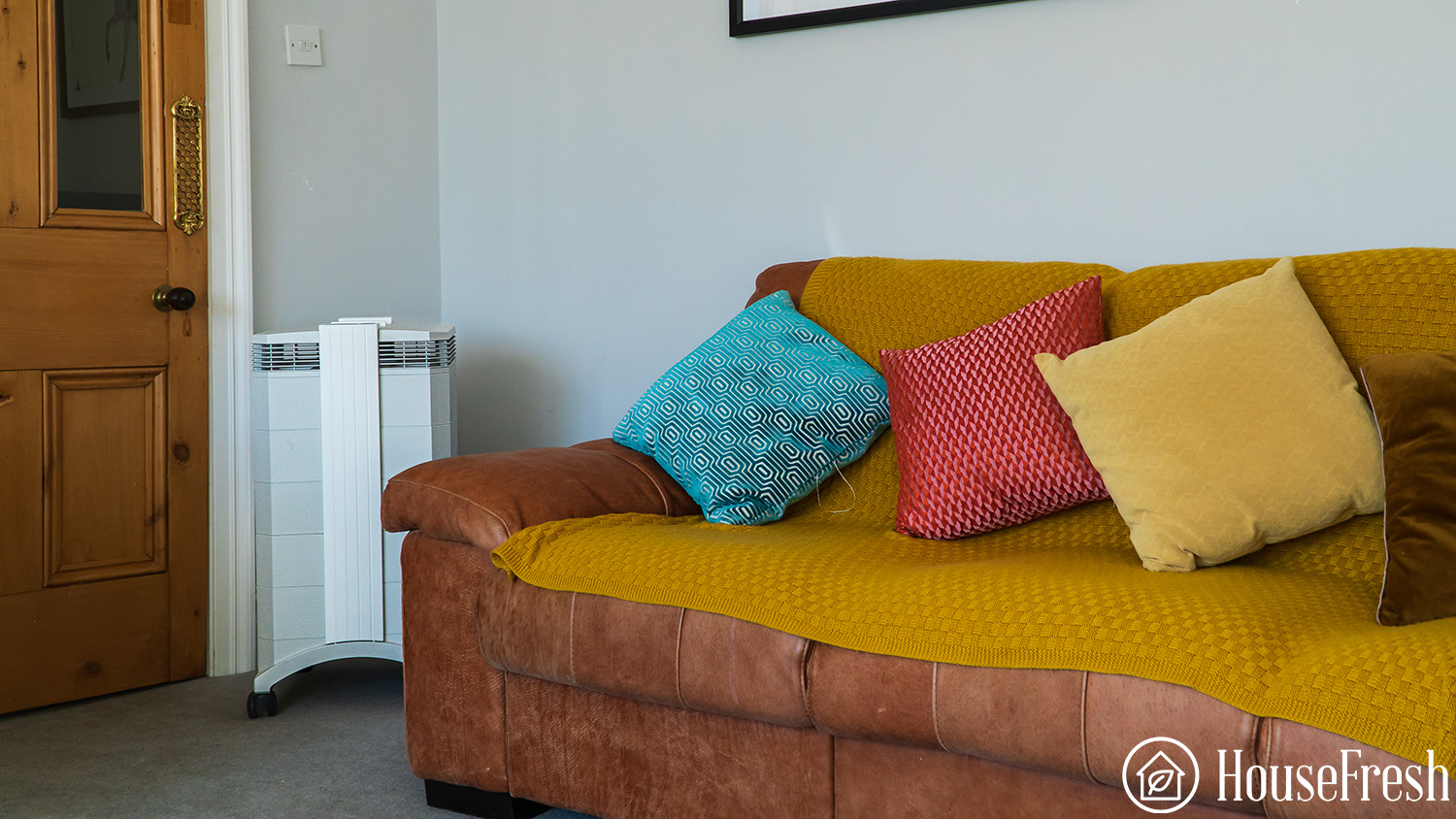
VOCs and odors aren’t the easiest pollutants to remove from the air, especially in large rooms. In order to clear chemical fumes, gasses and smells from the air, you will need an air purifier with a filter packed with activated carbon — the more, the better. That’s exactly what you get with the IQAir Healthpro Plus.
What we really like
What we think could be better
When it comes to ozone and the technology generating it, IQAir takes a firm stance. They often highlight the danger ozone can pose to our health and oppose using ionizers and other active technologies, questioning the long-term benefits they offer. So much so, that they have disassociated themselves from the industry-standard CADR ratings, partly because ozone-emitting purifiers often score highly, despite the dangers they pose.
I have been running my HealthPro Plus in his home since 2021, and it is still performing as well as it did on day one. Considering this air purifier was released in 1998, this is the only air purifier I own that was released over 20 years ago and still runs smoothly today.

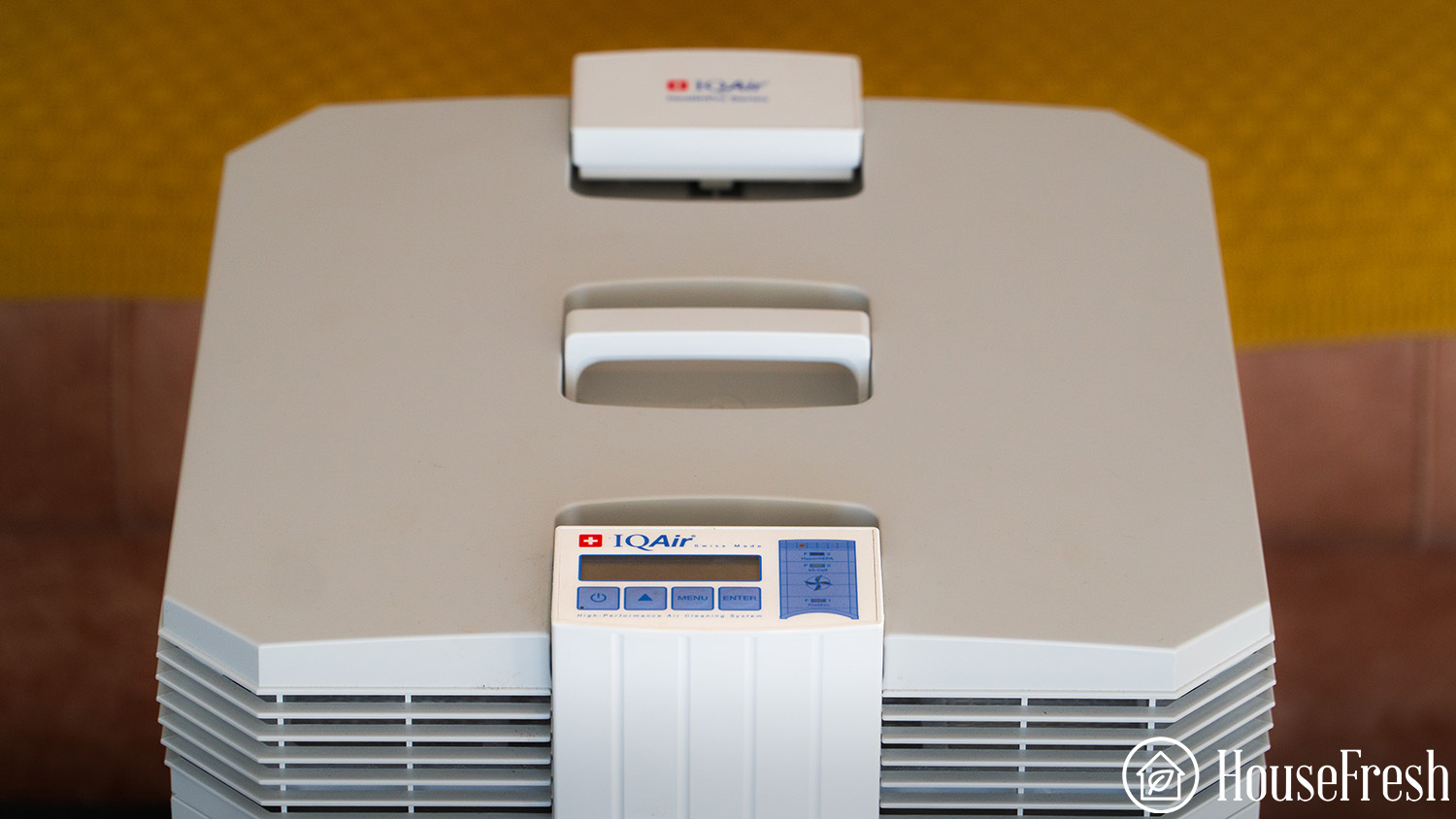
| HouseFresh rating: | ★★★★★ |
| Time to clean our 728 cubic feet test room (with the device running at top speed): | 28 minutes |
| Air purifier technology: | HyperHEPA and V50-CELL gas and odor filter |
| Recommended room size (5 air changes per hour): | 375 sq. ft. |
| Clean air delivery rate (CADR): | Estimated: 250 CFM |
| Dimensions (in inches / in cm): | 28H x 18W x 16D inches (71H x 38W x 41D cm) |
| Weight (in pounds / in kg): | 35 lbs (15.88 kg) |
| Filter life: | 4 years |
| Noise level (measured from 3 ft. away): | Speed 1: 36.9 dB Speed 2: 37.2 dB Speed 3: 40.9 dB Speed 4: 47.2 dB Speed 5: 53.9 dB Speed 6: 61.2 dB |
| Electricity consumption in watts (recorded with an electricity usage monitor): | Standby mode: 1 watts Speed 1: 16.5 watts Speed 2: 32.7 watts Speed 3: 47.3 watts Speed 4: 69 watts Speed 5: 94.3 watts Speed 6: 145.2 watts |
| Estimated running costs (electricity consumption + filter replacements): | $421.47 per year |
| Cost per CADR cfm (based on dust CFM as reported by AHAM): | $3.60 |
| Manufacturer’s warranty: | 10 years |
| Country of manufacture: | Switzerland / Germany |
Two other good air purifiers that don’t generate ozone
The five air purifiers above are my top picks for those looking for a powerful ozone-free unit, but these are other units with solid performance that nearly made the list.

Mila
The Mila is a good-looking air purifier that comes with a ton of filter options, depending on the specific air quality issue you want to tackle.
Not only that, it also comes with eight different smart sensors that allow the unit to scan the room and adjust automatically to what’s needed.
The reason why the Mila didn’t make our top picks has to do with costs. The Mila is not cheap (list price: $419.99) and long-term costs can get expensive due to the high price of filter replacements.

Smart Air SA600
Unlike the vast majority of air purifiers, the SmartAir SA600 pulls air from both sides of the device and has two sets of filters (HEPA H13 + carbon) through it’s dual inlets.
Like other Smart Air devices, there is no ionizer or smart functions in the SA600, so it is all about air cleaning power. In our particle removal test, the SA600 was able to reach PM1 zero in 24 minutes — just one minute slower than the Winix 5500-2 using its PlasmaWave ionizer function.
Other ozone-free air purifiers we tested but don’t recommend
- Austin Air HealthMate – This USA-made air purifier is great for tackling VOCs and gasses in the home with its enormous filter, but it’s a little overpriced for the air cleaning speed results we got from our testing.
- AROEVE MK01 – Even though this smaller air purifier doesn’t produce harmful ozone that could affect your health, its cleaning performance was sub-par in our home lab tests. I don’t understand how it’s such a big seller on Amazon.
- Honeywell HPA300 – This air purifier is ozone free and a great solution for cleaning airborne contaminants from large rooms. But, for me, it’s a bit too old and is missing lots of features that are basic in most modern units.
- Dyson HP04 Pure Hot + Cool – It looks good, doesn’t emit any ozone and has the brand name associated with innovation, but it’s seriously overpriced for the air cleaning performance. Nice fan, though!
What to look for when buying an ozone-free air purifier
If you want your air to be free of harmful ozone and your home to be pollutant-free, you’re gonna need an air purifier with (and without) certain features. Let me take you through my top priorities.
1. Avoid ionizers, UV-C, needle-point ion generators, bi-polar ions, electrostatic precipitation and plasma technology
The technology inside air purifiers that creates ozone can come in different names, but it’s usually known as air ionization. This type of technology can produce harmful ozone as a byproduct, and no matter how little of a byproduct it is, it can still have an adverse effect on your health.
In my opinion, you should steer clear of any air purifier with this technology, or to be honest, any technology that isn’t HEPA and activated carbon filtration.
2. Measure your room
The size of your room heavily dictates which air purifier you will need. If you introduce an air purifier that doesn’t have an appropriate CADR (Clean Air Delivery Rate) will either be ineffective or a waste of space and electricity.
The basic rule is: the bigger the room, the higher CADR you will need.
We’ve taken all the guesswork out of it for you with our tool that allows you to see what CADR you’ll need for your room (in accordance with EPA guidelines of 4.8 changes per hour).
3. Look for high performance particle filters (bonus points for activated carbon)
The most effective way to keep your air clean is to use an air purifier that uses a high quality particle filter to remove particulates from the air and, ideally, uses activated carbon to tackle gases and smells.
Every air purifier I recommended in this list comes with a high grade particle filter and has the option of upgrading it to include activated carbon as well.
4. Decide whether you really need smart features
In our tech driven age, brands are adding more and more smart features to their air purifiers (unless you’re Smart Air).
From air quality indicators and auto modes, to sleep modes and smartphone connectivity, you will need to consider which (if any) you will use.
Smart features usually come at an extra cost (ahem, Mila), so you’ll need to factor this into your budget.
Common questions about ozone and air purifiers
You may have to do a little research to find your answer. If you go to the California Air Resources Board list of approved air purifiers, you can search for the brand and model of your air purifier. When you’ve found the right unit, look at the ‘Type’ column. If it says “Electrical,” then the product may generate ozone. But if it says “Mechanical,” it does not.
The simple is yes, 100%. Ozone-free air purifiers that contain HEPA filters and activated carbon filters are capable of removing 99.97% of pollutants from your air. They are the most effective way of making sure you have clean, uncontaminated air to breathe in your home.
Air purifiers can remove ozone and other gasses from your air, but only if they contain a filter packed with activated carbon. I suggest finding a unit that contains activated carbon pellets and as much as possible. If the presence of ozone is an issue in your home, I recommend you check out the IQAir Healthpro Plus.
Blueair air purifiers often come with ‘HEPASilent™ filtration technology’ that uses a combination of electrostatic and mechanical filtration. Electrostatic filtration can produce ozone as a byproduct, but Blueair states that “All Blueair air purifiers are CARB certified, which means that they are considered safe and do not exceed ozone emission limits”.
No. Just like Blueair (see FAQ above) some air purifiers use a combination of HEPA filtration and ionizer technology. This is usually stated by the manufacturer, but if you’re unsure, check out the California Air Resources Board list of approved air purifiers
Wrapping up
With all the contaminants that can pollute the air in your home, you don’t want to add ozone to that list. The harmful effects caused by ozone are no joke. Prolonged exposure to these chemicals can be seriously damaging to your health and the health of your family.
To be sure that you’re not being exposed to harmful ozone, you will need an air purifier that doesn’t use ionizer (or similar electrostatic) technology.
There are plenty of air purifiers on the market that don’t use this technology, and some will actually remove any ozone in the air. This guide highlights the best of those that we have personally tested.
Happy hunting.
December 26th, 2024
- Updated the list to include a new budget option (the AirFanta 3Pro) after we learned that the mighty TaoTronics AP-003 has been discontinued.
May 25th, 2024
- Added links to our video reviews, where YouTube videos were already available.
April 24th, 2024
- Updated our SPECS & FEATURES tables with noise levels and electricity consumption at each fan speed.
January 25th, 2024
- We rolled out a new design for the site, so we had to make lots of adjustments to the layout of this page to fit with the new design elements.
November 21st, 2023
- Updated our top picks based on data from air purifiers we tested in 2023.
- The Levoit EverestAir entered the ranking.


